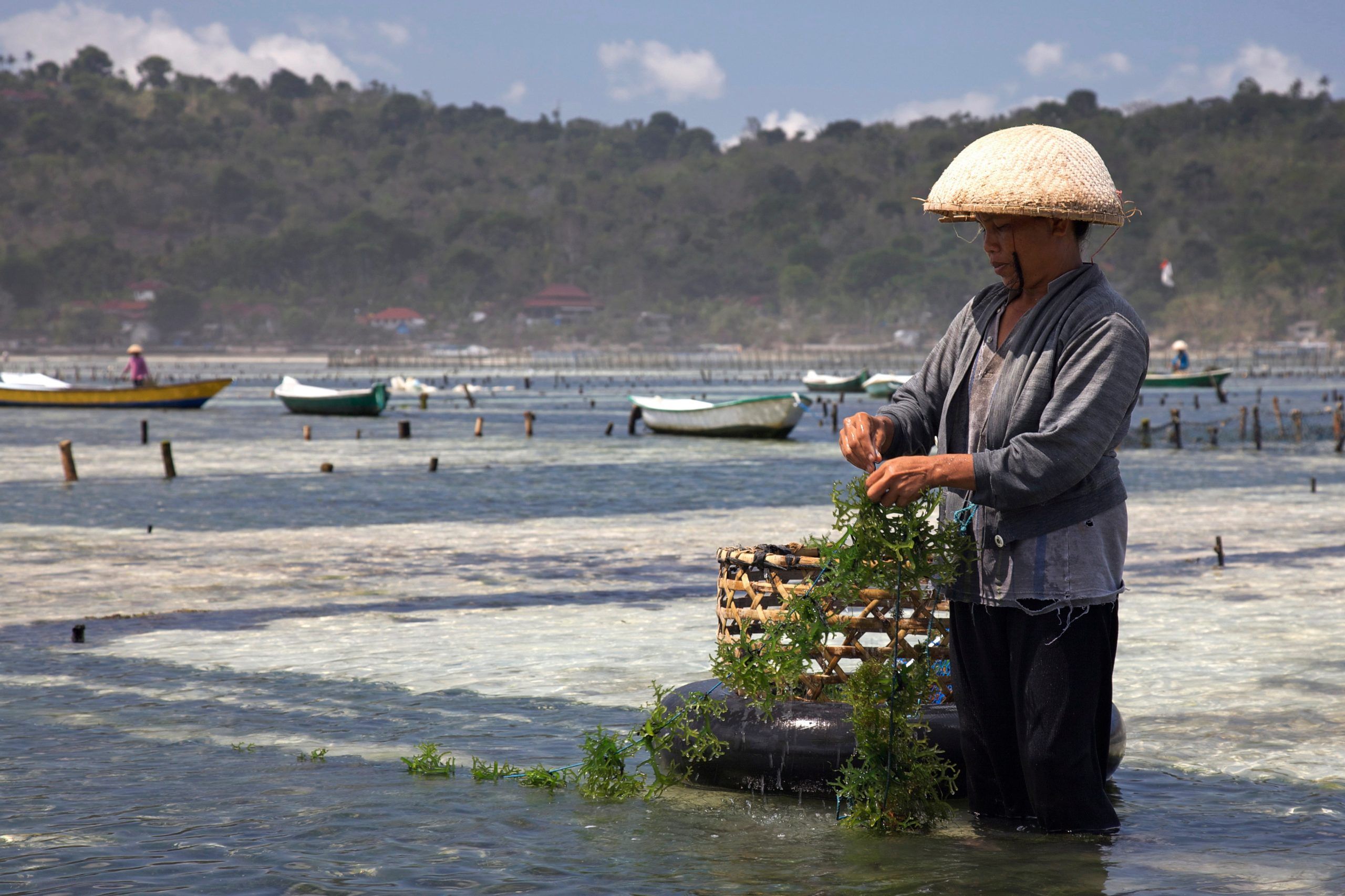After gaining “superfood” status, the market for algae could reach up to $44.7 billion by 2023, according to a new report from Fish 2.0, a business competition designed to increase investment in sustainable seafood startups.
This year, the competition has seen a marked increase in the number of algae-focused startups applying to take part, with more than 10 of the 80 startups making it through to phase three (of four) of the competition working directly with algae.
The new free report explains that algae could transform industries if propagation and distribution are able to mature. The report argues that market demand is already in place and coming from many different industries.
Algae convert sunlight and carbon dioxide into fats and proteins that can be used in oils both for eating and fuel, as well as protein consumable by both humans and animals, and it also contains prized micro-nutrients.
Macroalgae
Consumers are likely most familiar with macro-algae as these include edible seaweeds and kelp, common in Asian foods, that have also been popular in the US and Europe for decades. These are largely aquatic plants that can be easily grown in bodies of water, making them an excellent tool for economic development, according to the report.
Monica Jain, founder of Fish 2.0 and Manta Consulting, says macroalgae cultivation is “a good solution for fishing communities that need alternate sources of income.” Increasingly, macro-algae has become a food ingredient as well, like in the case of carrageenan, a controversial food stabilizer recently banned from USDA-certified organic products by the National Organic Standards Board.
Macroalgae are also in demand for cosmetics and pharmaceuticals, mainly in the US and Europe, but the supply chain for these plants is long and can leave the farmer with low margins.
“While macro-algae are relatively easy and cheap to grow, most economic value is added during the processing and extraction of their beneficial compounds. Macro-algae growers therefore are focused on refining their production methods and vertically integrating with value-added processing in order to further their economic development and profit objectives,” reads the report.
Microalgae
Microalgae are single-celled organisms such as chlorella and spirulina and are fairly commonly found in health-food stores or mixed into shakes and nutritional supplements. They can also be used in biofuel, bioplastics, fertilizers, pharmaceuticals, and cosmetics, as well as in animal and fish feeds.
In fact, the fish feed market is an attractive one, says Jain. Algae is important to the early growth stages of shellfish and selling algae for use in fish feed as opposed to fertilizer, a more traditional market, is more lucrative. Shellfish farmers may also choose to cultivate some microalgae of their own in order to avoid the risk of supply issues from a third party. “It’s not going to replace oysters, but there might be people that grow it into a larger cut of their businesses,” she told AgFunderNews.
The report notes the opportunity here for a producer to meet this demand. But production of these algae is a bit more complicated, often done in controlled lab settings, according to Jain. One startup in the Fish 2.0 competition, EnerGaia, is challenging this by creating low-tech, rooftop spirulina farms in Bangkok, Thailand.
Strategies for Growth
The report suggests three tactics to grow the worldwide algae market:
Colocation to enhance sustainability: “Micro-algae production could be co-located with wastewater treatment, ethanol production, or coal power generation, whereas macro-algae could feed off nutrients from agricultural runoff in coastal waters.”
Process on site to keep more margin: “To capture more value, growers should do some basic processing on-site to increase product quality/price and reduce spoilage.
Functional claims over price competition: “Differentiating on functionality, rather than competing on price, will be key to establishing algae as a viable alternative to some of the high-volume commodities in feed, food, and cosmetics.”
Jain also warned that the algae industry is fairly underdeveloped and more regulations may be necessary to ensure that cultivation remains environmentally sustainable. “There will have to be a certain amount of regulation that comes in to ensure that the right types of algae are grown in the right places. It can be very beneficial for the environment.”
Here are some of the companies that have made it to phase three of the Fish 2.0 Competition:
South Pacific Mozuku, based in the Kingdom of Tonga, processes and harvests a unique seaweed that reportedly assists in slowing down the aging process, used globally in high-end cosmetics, health products, and foods.
Segoro Algae is an Indonesian company that processes seaweed to create high-quality extracts to sell to various food producers in Indonesia.
PatBio, based in Chilean Patagonia produces fish feed supplements, working with artisan fishermen who harvest seaweed in a sustainable manner.
EnerGaia from Bangkok, Thailand is a social enterprize that produces fresh and sustainable microalgae products. They are making spirulina grown in seawater a part of daily diets by utilizing otherwise unusable space and land to cultivate healthy food in the Lower Mekong region.




